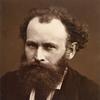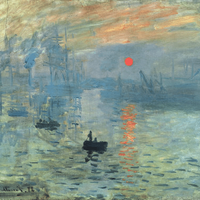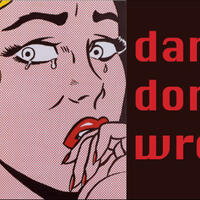More about Olympia
- All
- Info
- Shop

Sr. Editor
Manet's Olympia stares you, and all future lovers, down.
This is one of the most iconic paintings in Western art history (La-dee-da).
This woman was one of Manet's favorite models, a fellow painter named Victorine Meurent.
If Manet had said this was Venus or some other goddess everyone would have loved it. Because she is just another slutty lady, the critics decried the painting as crude and immoral. Turns out that's great for staying power.
Some have suggested that she is looking in the direction of the door, as her client barges in unannounced, but it's for sure her stare that shocked everyone so much. She doesn't look embarrassed to be naked, or demure as a goddess would.
The composition of the painting looks very similar to Titian's Venus of Urbino and Giorgione's Sleeping Venus. Those women however are mythical beings and Olympia is a prostitute.
While nudes of the time were often shown with a sleeping puppy (a sign of fidelity and being docile), Manet shows his girl with a black cat, tail stuck up in the air looking very phallic and un-docile.
The flowers are probably a gift from a satisfied client.
Featured Content
Here is what Wikipedia says about Olympia (Manet)
Olympia is an 1863 oil painting by Édouard Manet, depicting a nude white woman ("Olympia") lying on a bed being attended to by a black maid. The French government acquired the painting in 1890 after a public subscription organized by Claude Monet. The painting is now in the Musée d'Orsay, Paris.
The figure of Olympia was modeled by 19 year-old Victorine Meurent, and that of her servant by Laure. Olympia's confrontational gaze caused shock and controversy when the painting was first exhibited at the 1865 Paris Salon, especially because a number of details in the picture identified her as a prostitute.
The title of the painting is generally attributed to Manet's close friend Zacharie Astruc, an art critic and artist, since an excerpt from one of Astruc's poems was included in the catalogue entry along with Olympia when it was first exhibited in 1865.
Check out the full Wikipedia article about Olympia (Manet)



















